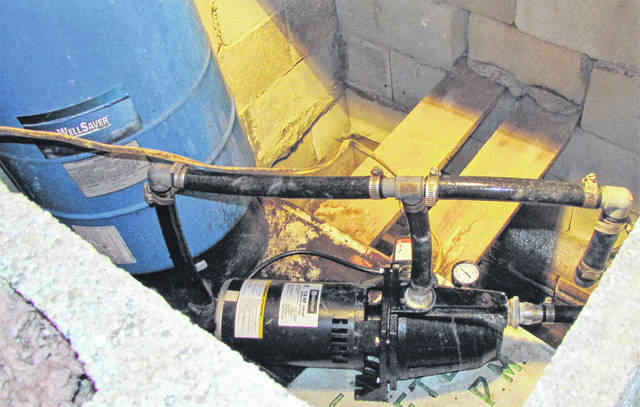With hundreds of billions of dollars on the verge of being funneled into some version of a federal infrastructure spending bill, national and statewide groundwater groups are urging Congress to include rehabilitation or repair of private water wells in the measure.
According to figures from the Ohio Department of Natural Resources, there are a little over 3,630 private water wells in Highland County sprawled out over its 17 townships.
The Ohio’s Division of Water reported that it has maintained records on more than 725,000 water wells that provide the water needs to over 1.8 million people.
Ben Frech, public relations manager for the National Ground Water Association (NGWA), told The Times-Gazette that there were approximately 15 million private household wells in the United States, serving over 42 million people.
“Water infrastructure is very popular in Congress because it impacts everybody,” he said. “Senate Bill 914, which is a big infrastructure bill, passed with strong bipartisan support with only two senators voting against it.”
The NGWA, along with 17 other state groundwater associations including the Ohio Water Well Association (OWWA), have drafted a letter to congressional leaders urging them to include private water wells in any future infrastructure legislation, since Frech said a large part of any future funding will most likely be earmarked for rural and public water systems.
“Nationally, it’s estimated that more than 40 million people depend on water wells as their primary source of clean water,” he said. “Most of these water wells are located in small, rural and oftentimes disadvantaged communities. Current infrastructure legislation proposes increased funding for small and rural public water systems, but connecting to these systems is often expensive for both the community and homeowner.”
According to information posted online from the Highland County Water Company, establishing new service costs $2,550 for a 5/8-inch tap, plus a $10 membership fee, with the first 1,000 gallons of water adding an additional $19, and $6 for each 1,000 gallons used after that.
Information supplied by the U.S. Environmental Protection Agency stated that the typical four-person household uses about 300 gallons per day, meaning the monthly water bill after new service is established with the HCWC would be nearly $70.
The NGWA said that expanding funding for water well infrastructure could potentially save homeowners and communities millions of dollars by allowing them to opt out of potentially costly connections to public water systems.
“Replacing and rehabilitating water wells is a more cost-effective choice for both homeowners and communities,” Frech said. “And it is often the best long-term solution to increasing water quality for those homeowners and communities.”
As an initial proposal to increase water quality and access, NGWA and OWWA are urging Congress to expand grant eligibility within the Safe Drinking Water Act to fund the rehabilitation, deepening, or replacement of water wells similar to those that dot the countryside in Highland County.
In the letter that was sent to Congress, the NGWA and the 17 other water well associations acknowledged the important role that private and municipal water wells play in communities across the country, especially in rural and underserved areas.
But they also advocate that homeowners should also have the option to get assistance to fix, rehabilitate or replace their wells to meet applicable standards in a cost-effective way.
“Today, we are asking for your commitment to support amending the Safe Drinking Water Act (SDWA) to allow grant funding for rural and disadvantaged communities to update their water well infrastructure for continued cost-effective local management, household savings, and increased water quality,” the group’s letter stated. “To better improve our nation’s water well infrastructure, we are first proposing that the rehabilitation, deepening and replacement of water wells be grant eligible for small and disadvantaged communities within the SDWA.”
If Congress were to adopt the inclusion of private water wells into the Safe Drinking Water Act, the group said that it would be beneficial on three fronts:
• Allow homeowners in rural and disadvantaged areas more options to cost-effectively manage their water source locally.
• Increase water quality in rural and disadvantaged communities through the repair and rehabilitation of private water wells.
• Millions of dollars in state and federal financial assistance funds could be saved that could then be applied to other communities’ water infrastructure needs.
Frech said to email [email protected], or call him at 614-898-7791 ext. 1570, to keep up with the progress of the organization’s congressional request.
Reach Tim Colliver at 937-402-2571.





